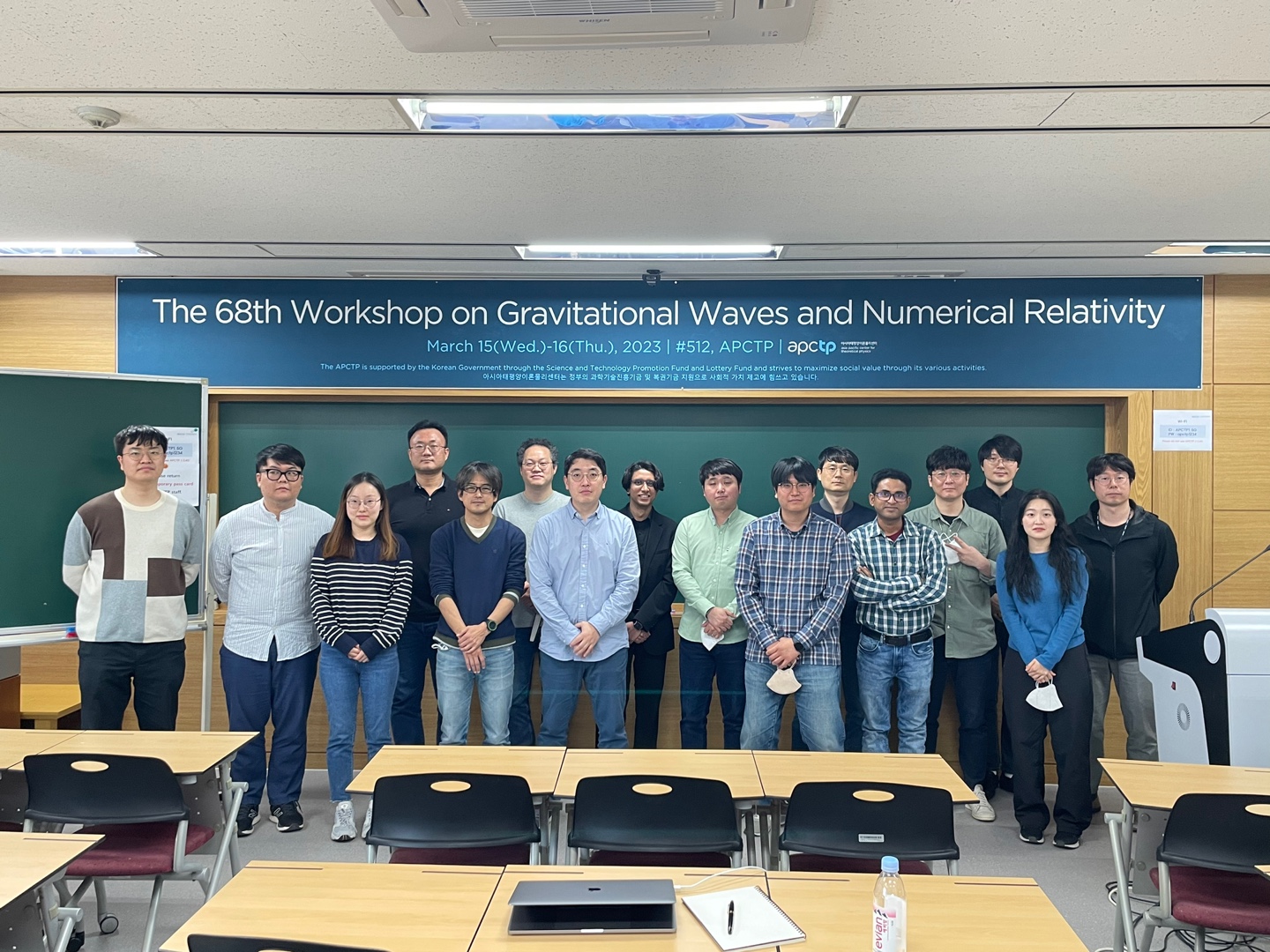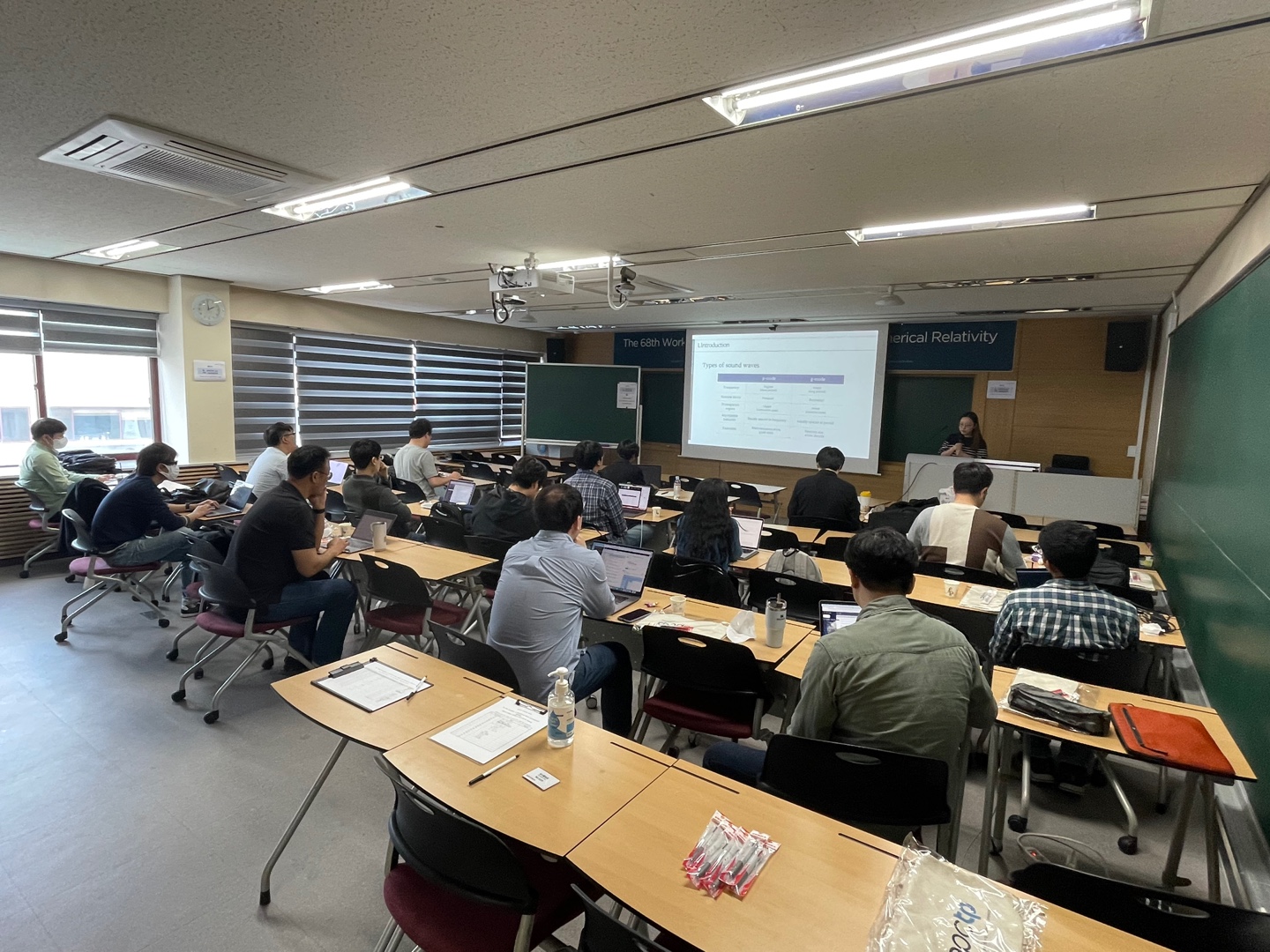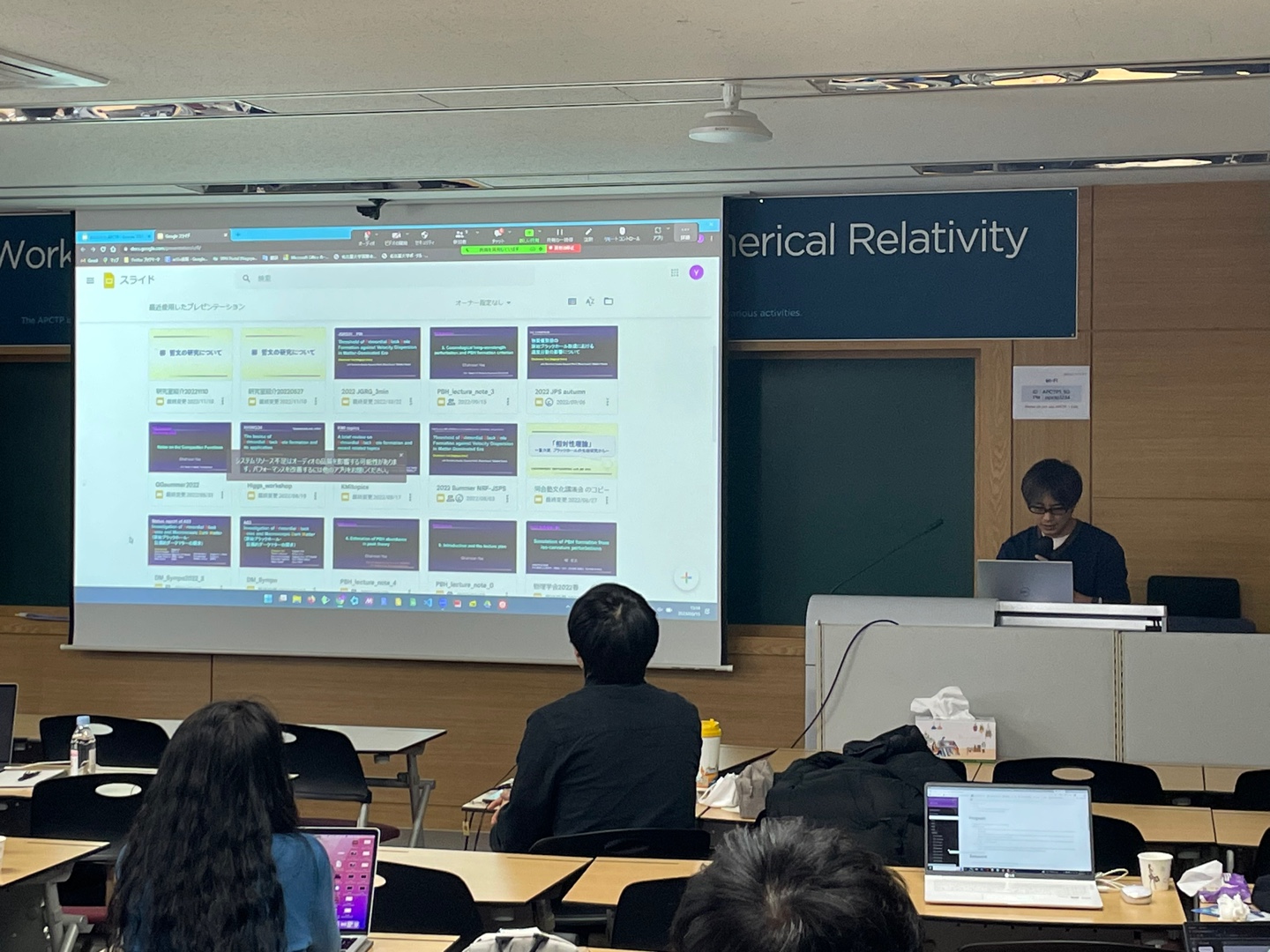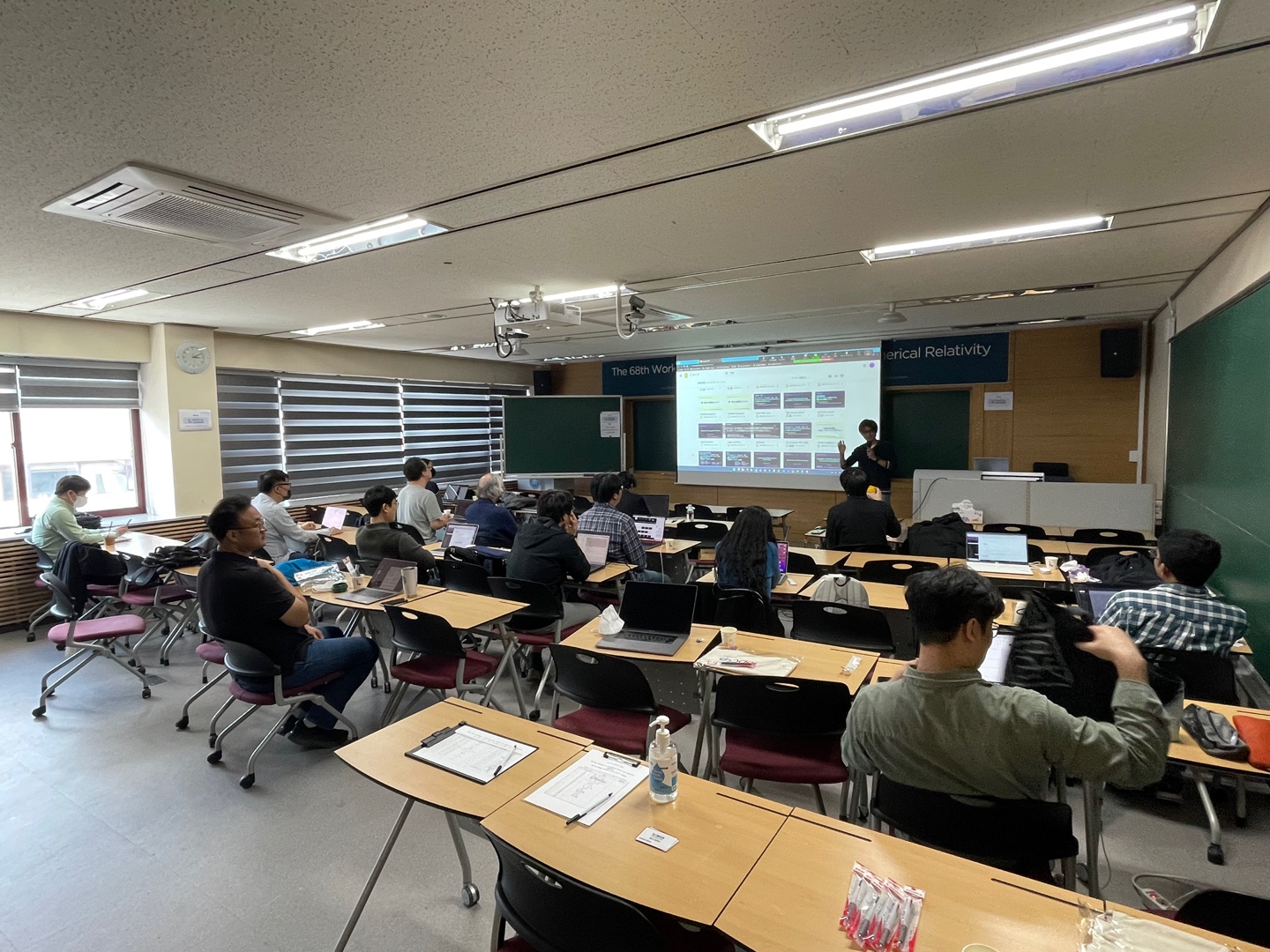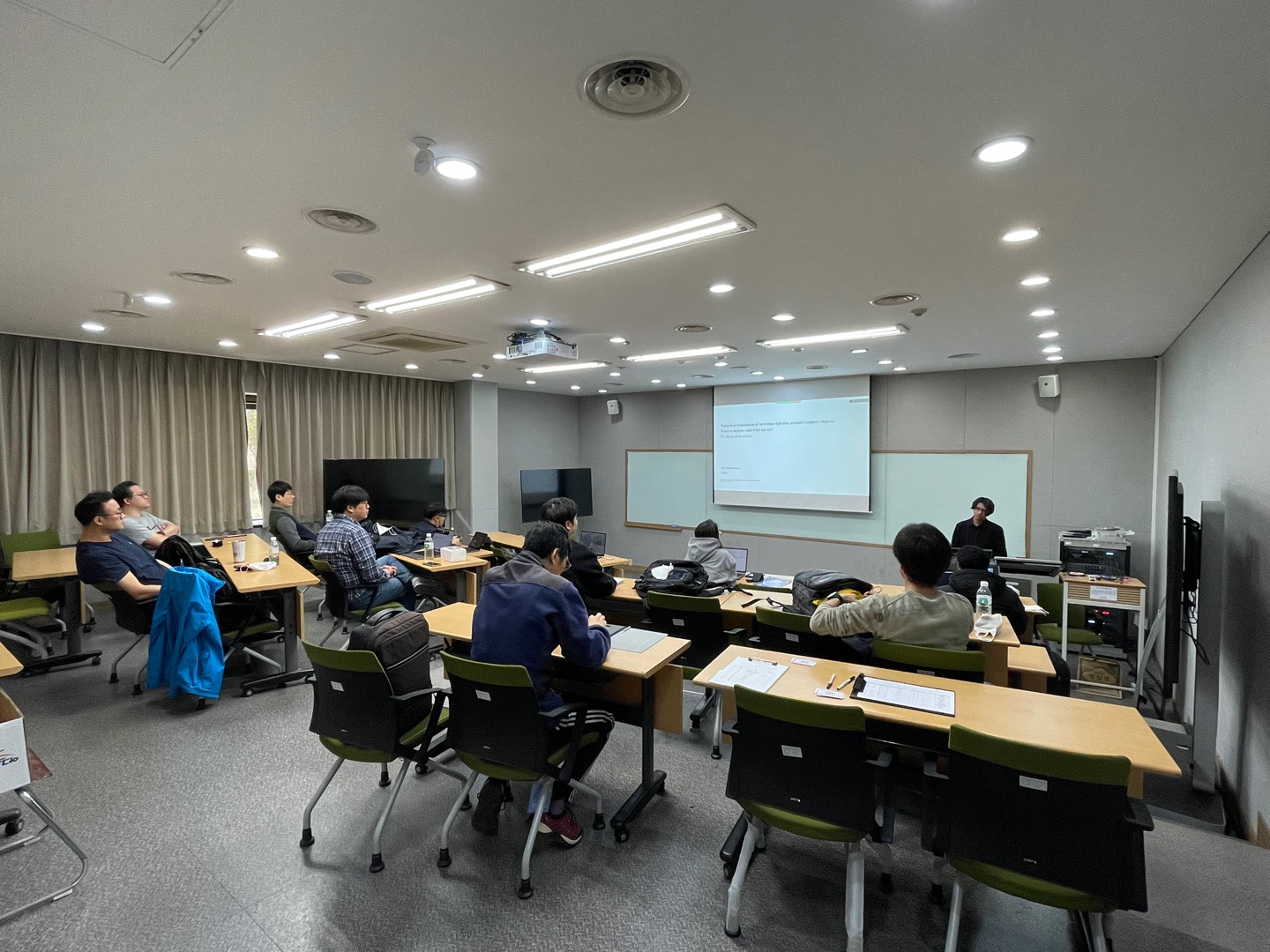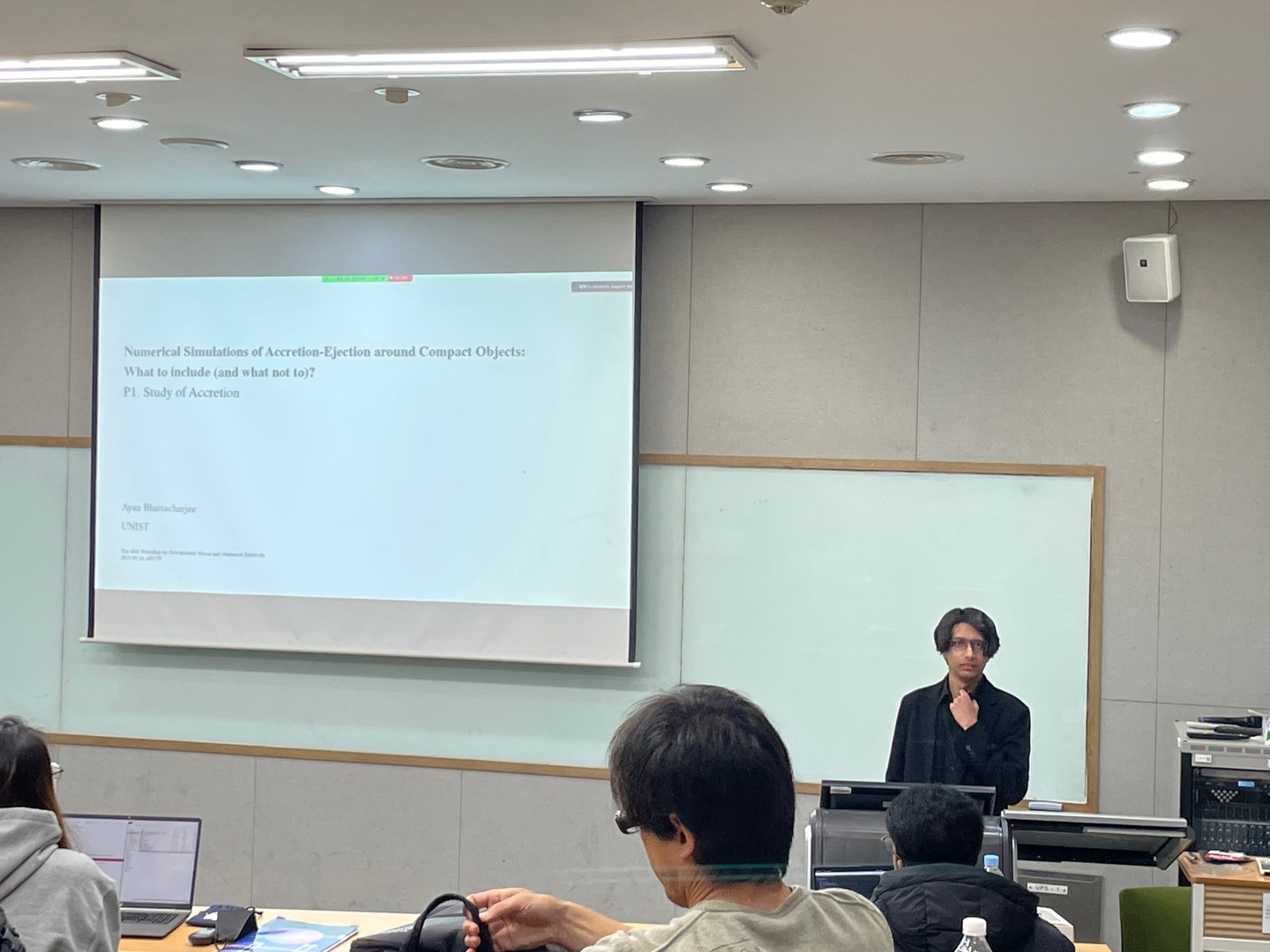Information
- Date: Mar. 15 (Wed.) - Mar. 16 (Thu.), 2023
- Venue: Rm #512, APCTP / Online (Hybrid)
- Accommodation: PIC
- Audience: Researchers and students in astrophysics
- Number of participants: 15 Offline / 15 Online
- Format: Long and intensive sessions from basic lecture to the latest research with a comfortable atmosphere to ask questions and discuss freely
- Sponsor: APCTP
- Contact
- Chan Park: iamparkchan at gmail dot com
- Jinho Kim: jkim at kasi dot re dot kr
Program
- Time zone: Korea Standard Time (UTC+09:00)
- Mar. 15 (Wed.)
- 14:00 - 14:25 [Student Session 1] Influence of cluster properties on the oscillation parameters (Yun-A Jo, KNU)
- 14:25 - 14:50 [Student Session 2] Classification and Analysis of KAGRA Glitch using Hveto during O3GK (Kihyun Jung, UNIST)
- 15:00 - 17:00 [Main Session 1] Numerical simulation of primordial black hole formation (Chul-Moon Yoo, Nagoya University)
- 17:00 - 18:00 Discussion
- Mar. 16 (Thu.)
- 10:00 - 12:00 [Main Session 2] Numerical Simulations of Accretion-Ejection around Compact Objects: What to include (and what not to)? (Ayan Bhattacharjee, UNIST)
Sessions
- Numerical simulation of primordial black hole formation
- Speaker: Chul-Moon Yoo (Nagoya University)
- Time: Mar. 15 (Wed.) 15:00 - 17:00
- Speaking Language: English
- Slide Language: English
- Abstract: I would like to give a lecture on the dynamics of primordial black hole (PBH) formation particularly focusing on the setup and specific techniques for the numerical simulation. First, I review the standard PBH formation scenario and the long-wavelength solution for the Einstein equation, which is relevant to the initial condition of the numerical simulation. Numerical procedures to solve the evolution equations are introduced for the general 3+1 dimensional simulation of PBH formation, and some specific examples are given. I would also explain the reduction of the 3+1 dimensional numerical code to that for spherically symmetric cases with some results in recent related works if I have time.
- Slide File: Yoo
- Numerical Simulations of Accretion-Ejection around Compact Objects: What to include (and what not to)?
- Speaker: Ayan Bhattacharjee (UNIST)
- Time: Mar. 16 (Thu.) 10:00 - 12:00
- Speaking Language: English
- Slide Language: English
- Abstract: Accretion flows around compact objects emit high energy radiation with varying spectral and timing properties. Observed timing variations, both short and long-term, point to the existence of a mechanism, dictated by the flow dynamics, and not by the stellar surface or magnetic fields, that is common in such sources (Mauche 2002). Spectral energy distributions of multiple sources indicate that the Comptonization process, the dominant mechanism for changing states in X-ray, takes place inside the flow, in the vicinity of the source, also has similar physical properties (Bhattacharjee 2018). In the first part, we try to answer the following questions: Is there a generalized flow structure at the core of accretion around compact objects? If so, what numerical tools are optimal for correctly capturing such flows? Outflows and/or collimated jets, emitted from the vicinity of the compact sources also show some similarity across objects, although the scales (length, time, energy and observed frequency) vary significantly across outflows from neutron stars, jets around micro-quasars and ultra-relativistic jets around AGN. Whereas dynamics of the small-scaled jets from micro-quasars show significant accretion-ejection connection through their spectral and timing properties (Banerjee et al. 2022), the large-scaled jets from radio galaxies show a more stronger connection to the ambient media through which it propagates (Mingo et al. 2019), which is observed through the complexity of the Fanaroff-Riley dichotomy. In the final part, we try to answer the following questions: Is there a minimalist approach to simulate jets across multiple scales? If so, what are optimal numerical tools?
- Slide File: Bhattacharjee 1
- Slide File: Bhattacharjee 2
- Slide File: Bhattacharjee 3
- Influence of cluster properties on the oscillation parameters
- Speaker: Yun-A Jo (KNU)
- Time: Mar. 15 (Wed.) 14:00 - 14:25
- Speaking Language: Korean
- Slide Language: English
- Abstract: The oscillation properties of solar-like stars depend on the fundamental stellar properties. Asteroseismic scaling relations based on global oscillation and stellar parameters allow for determining the fundamental properties of the star. For evolved stars in both fields and clusters, the mass has a substantial influence on oscillation properties, i.e. ν_max, Δν, δν_env, and δν_02, while the influence of effective temperature and metallicity is less significant. In this study, we have attempted to investigate the influence of cluster properties on the oscillation parameters of evolved stars belonging to the Kepler/K2 clusters.
- Slide File: Jo
- Classification and Analysis of KAGRA Glitch using Hveto during O3GK
- Speaker: Kihyun Jung (UNIST)
- Time: Mar. 15 (Wed.) 14:25 - 14:50
- Speaking Language: Korean
- Slide Language: English
- Abstract: We focuses on the use of Hveto, and Omicron in KAGRA to improve the quality of gravitational wave data. By organizing and classifying noise, Hveto can identify and eliminate sources of noise, reducing the time spent analyzing data. We explain how Hveto and Omicron were used during the O3GK period of KAGRA to identify sources of noise and improve the data quality. Additionally, we discuss the potential for using Hveto, and Omicron in KAGRA to identify and eliminate sources of noise, which could lead to the identification of new gravitational wave candidate events. Overall, we highlight the significance of Hveto, and Omicron in improving the quality of gravitational wave data from KAGRA, and how this contributes to advancing our understanding of the universe.
- Slide File: Jung
Supports
- Accommodation
- If you need accommodation support, select "Full accommodation support is required" in the registration form.
- Meals
- Dinner on Mar. 15
- Breakfast on Mar. 16
Registration
- Link: Google Form
- Due
- Accommodation support or reservation is required: Mar. 1 (Wed.)
- Online participation or no accommodation: Mar. 14 (Tue.)
Photos
